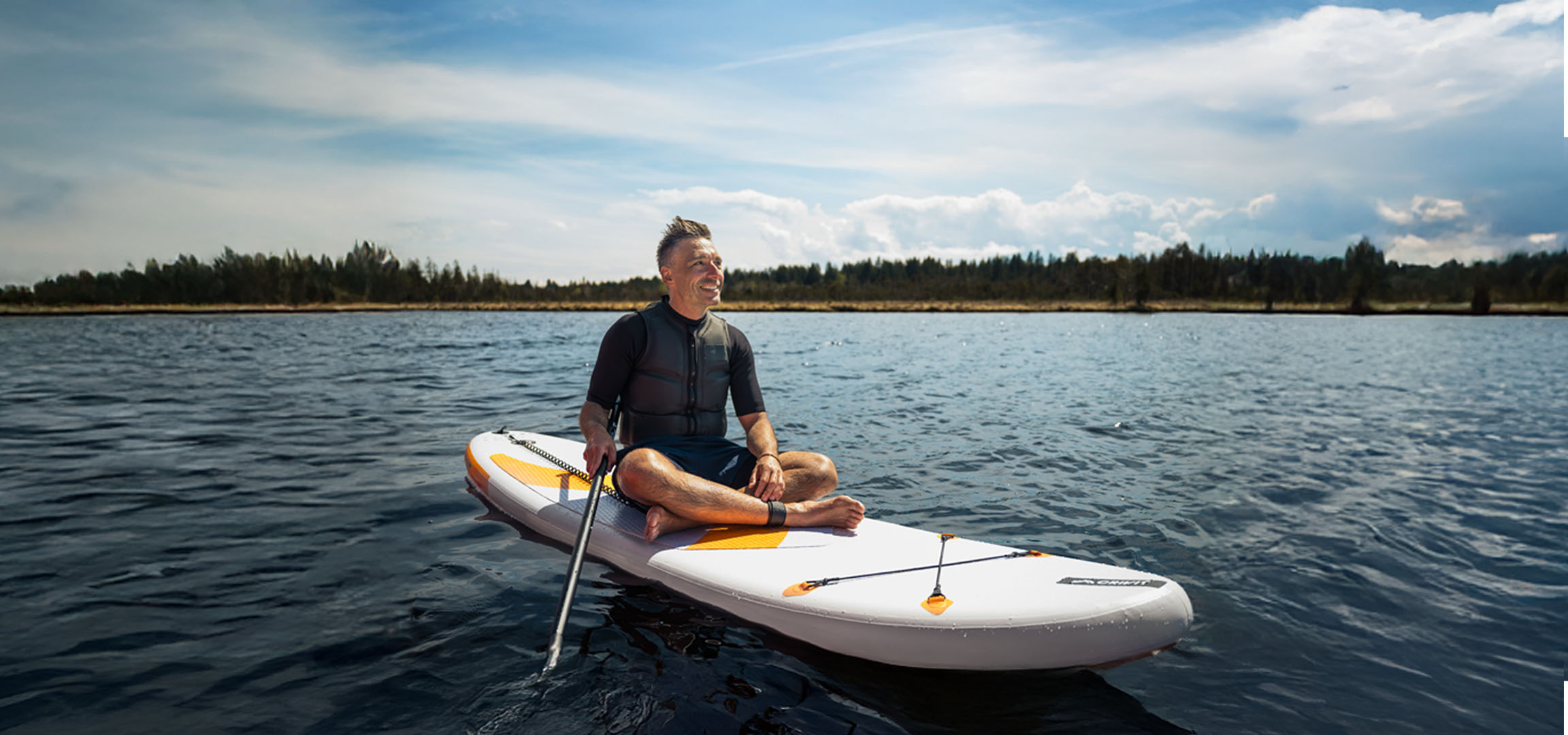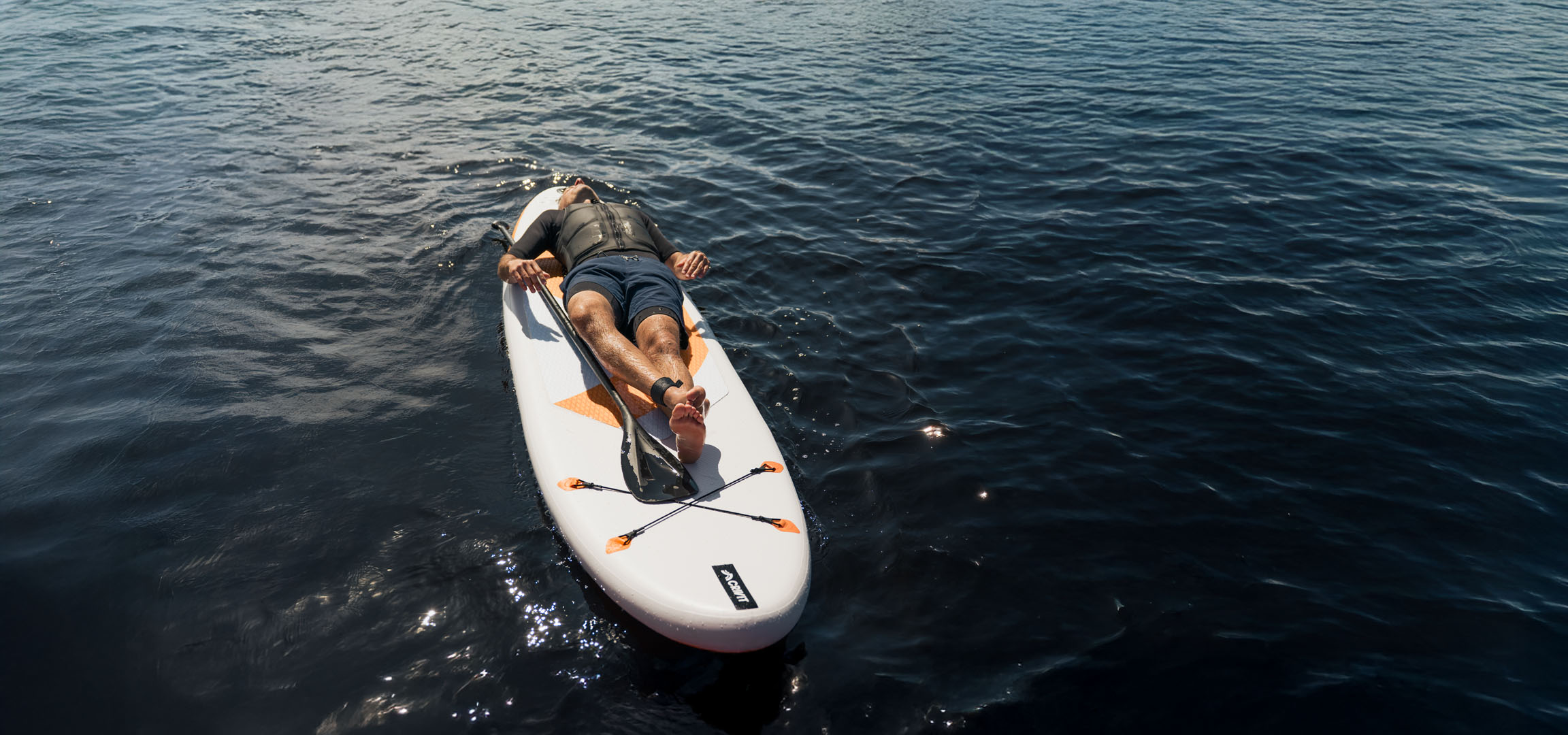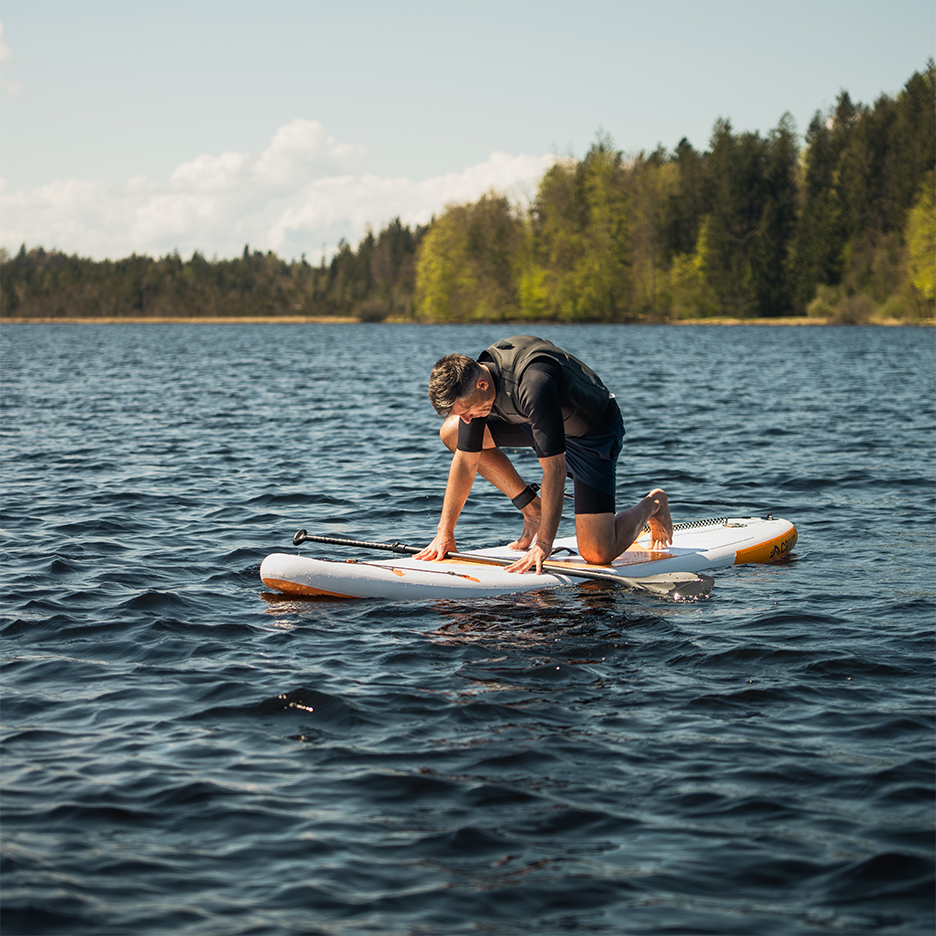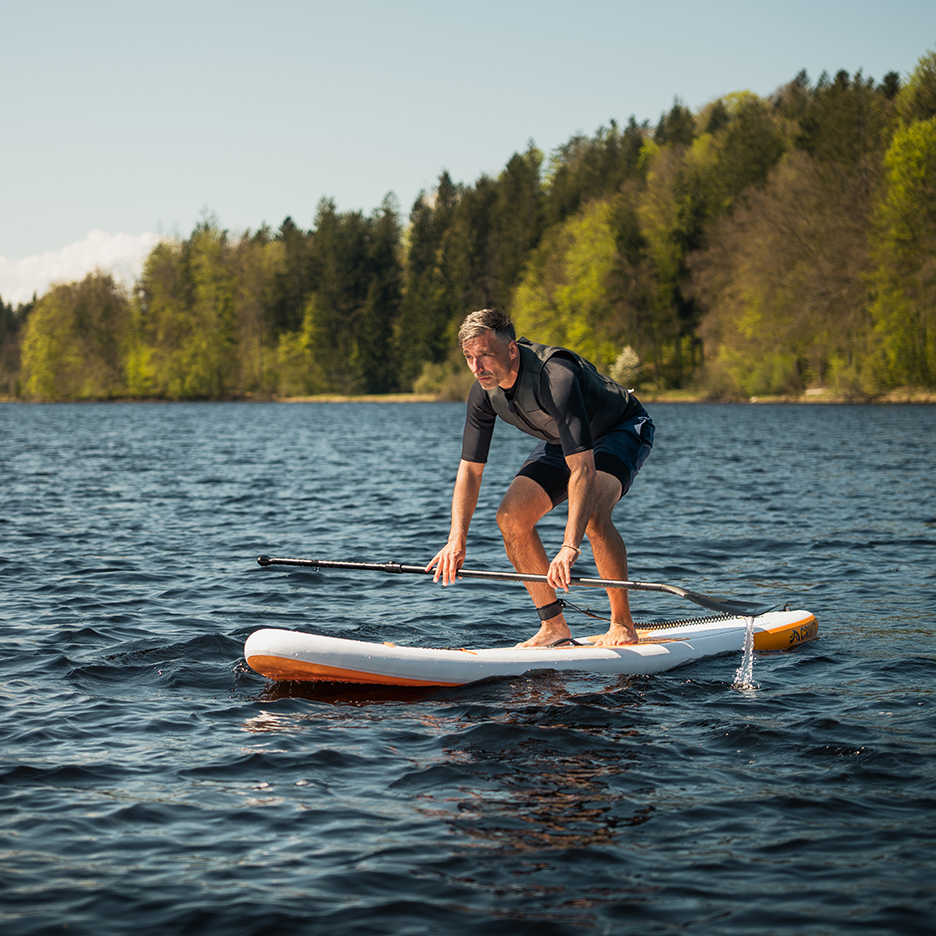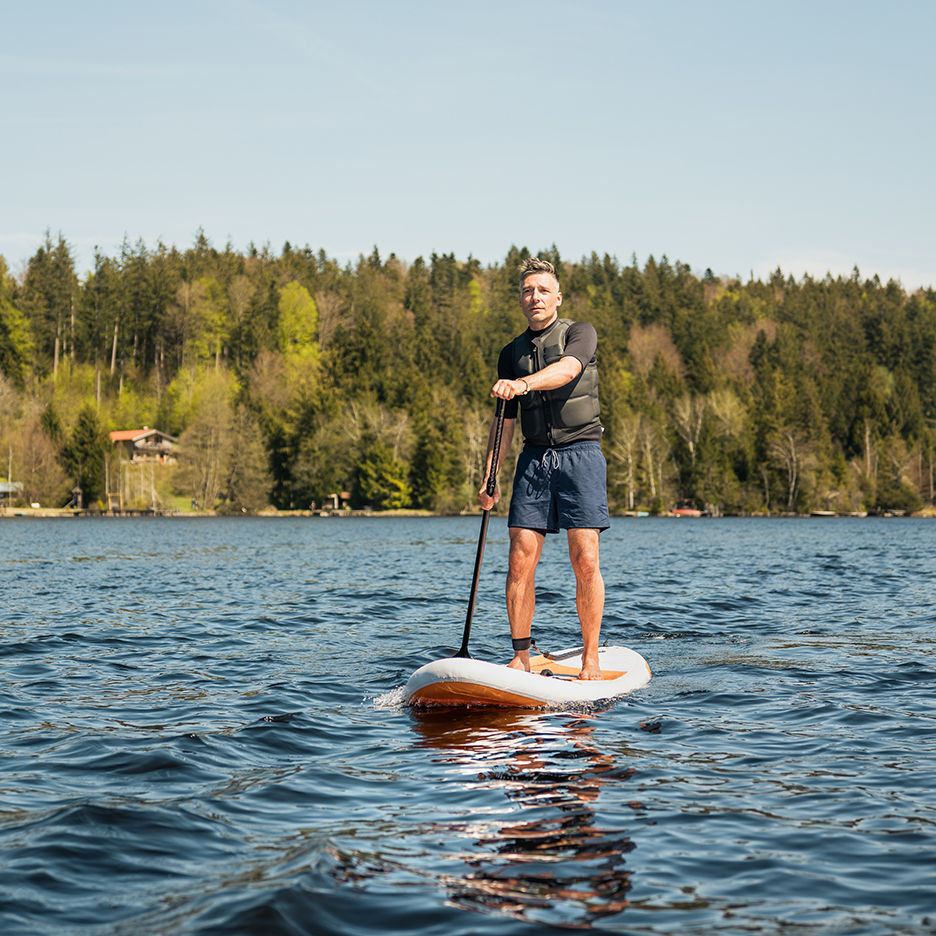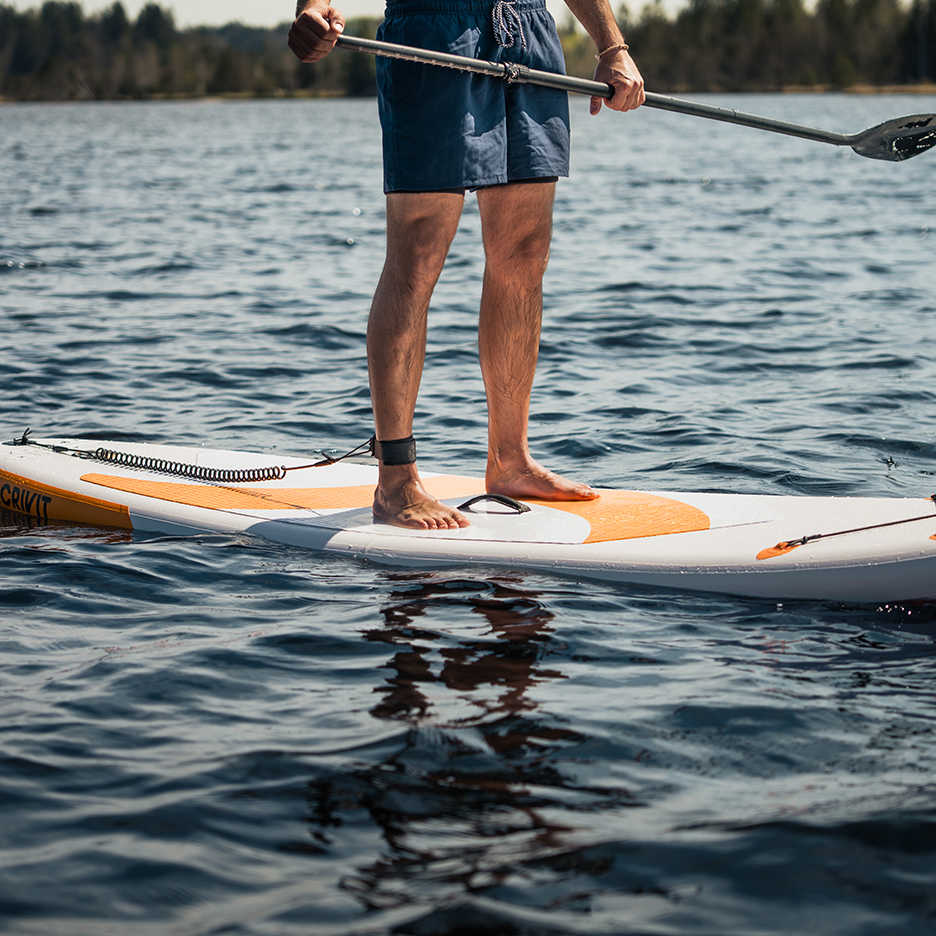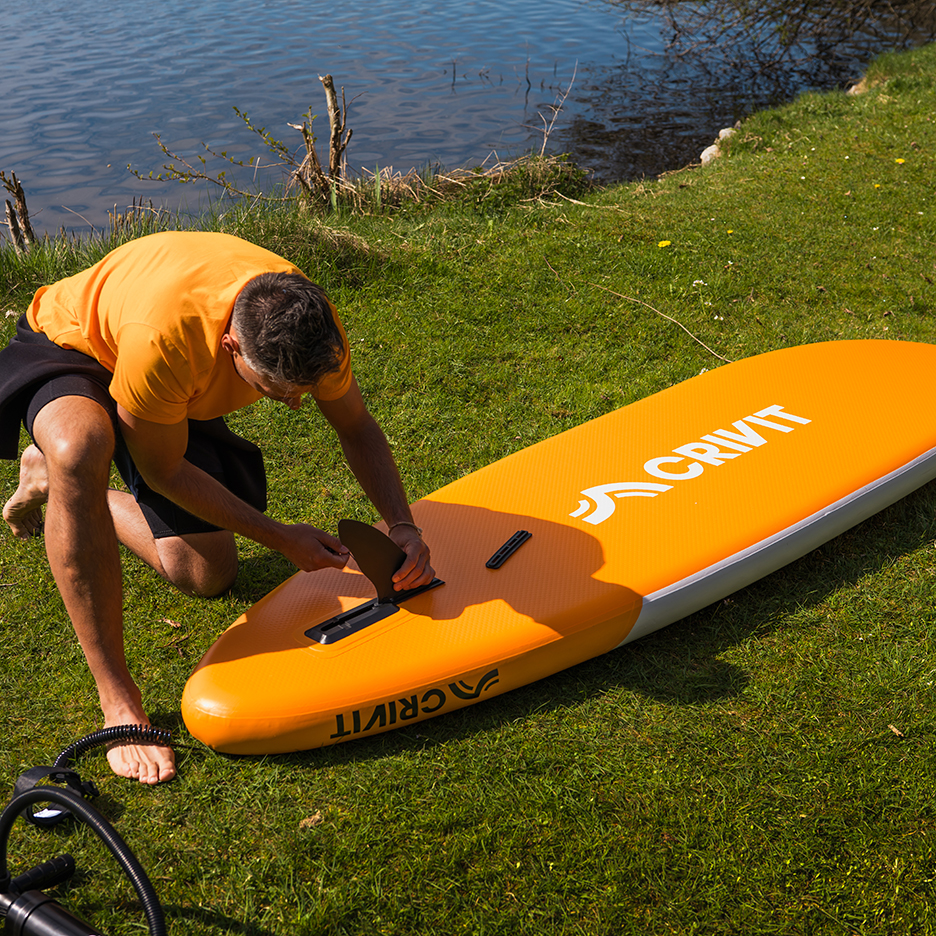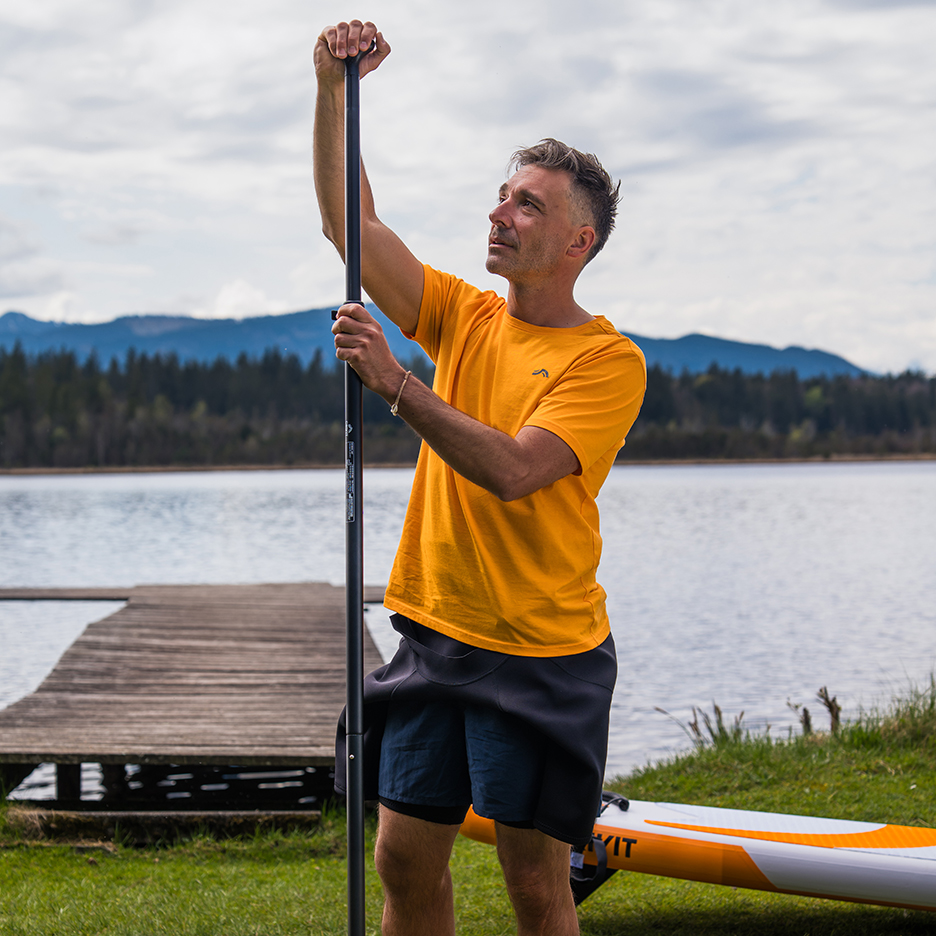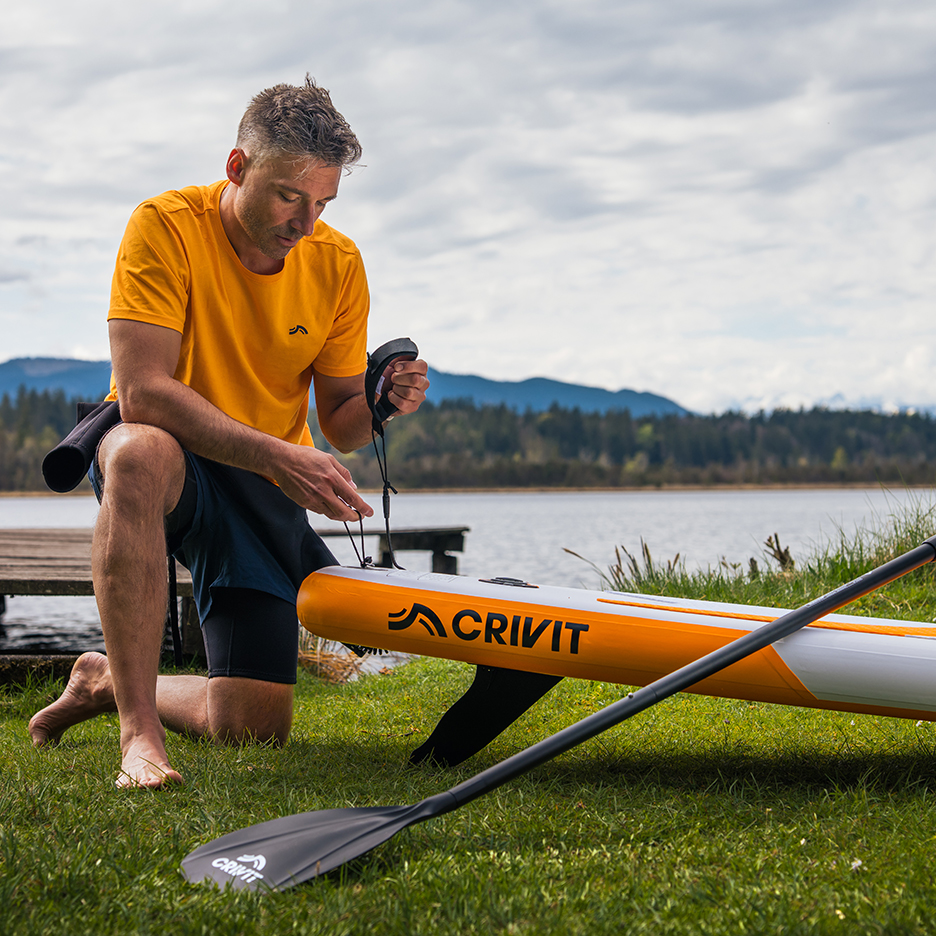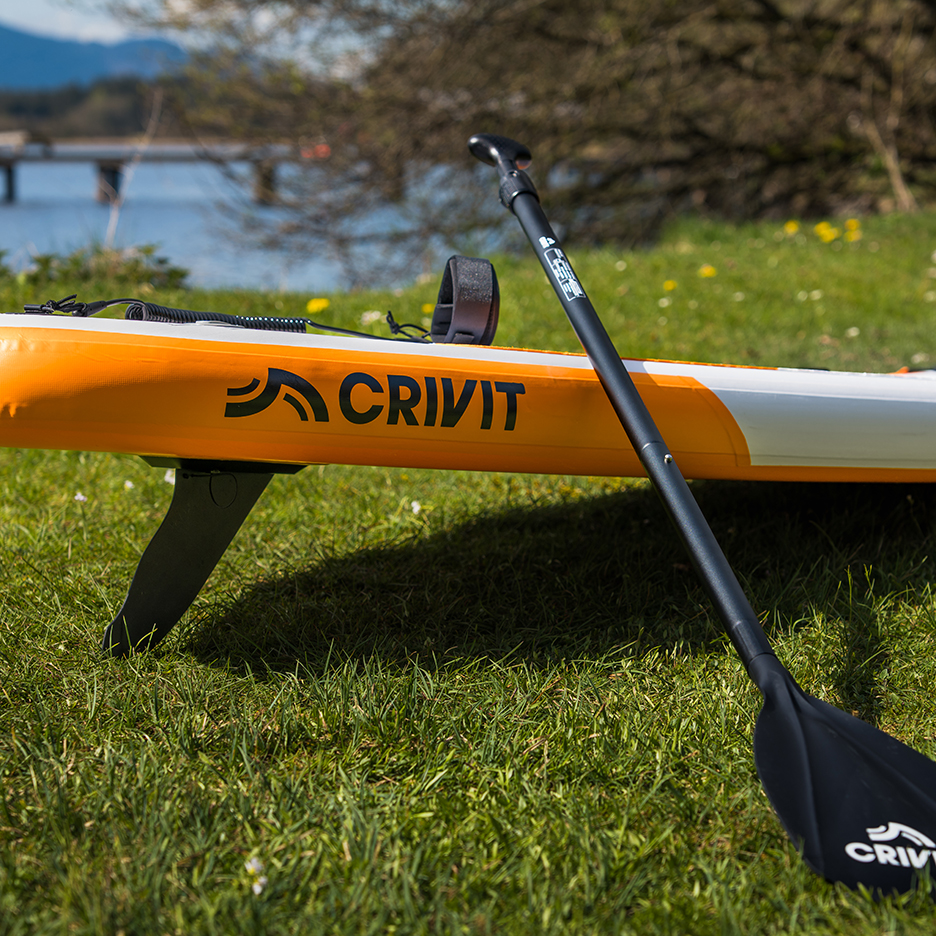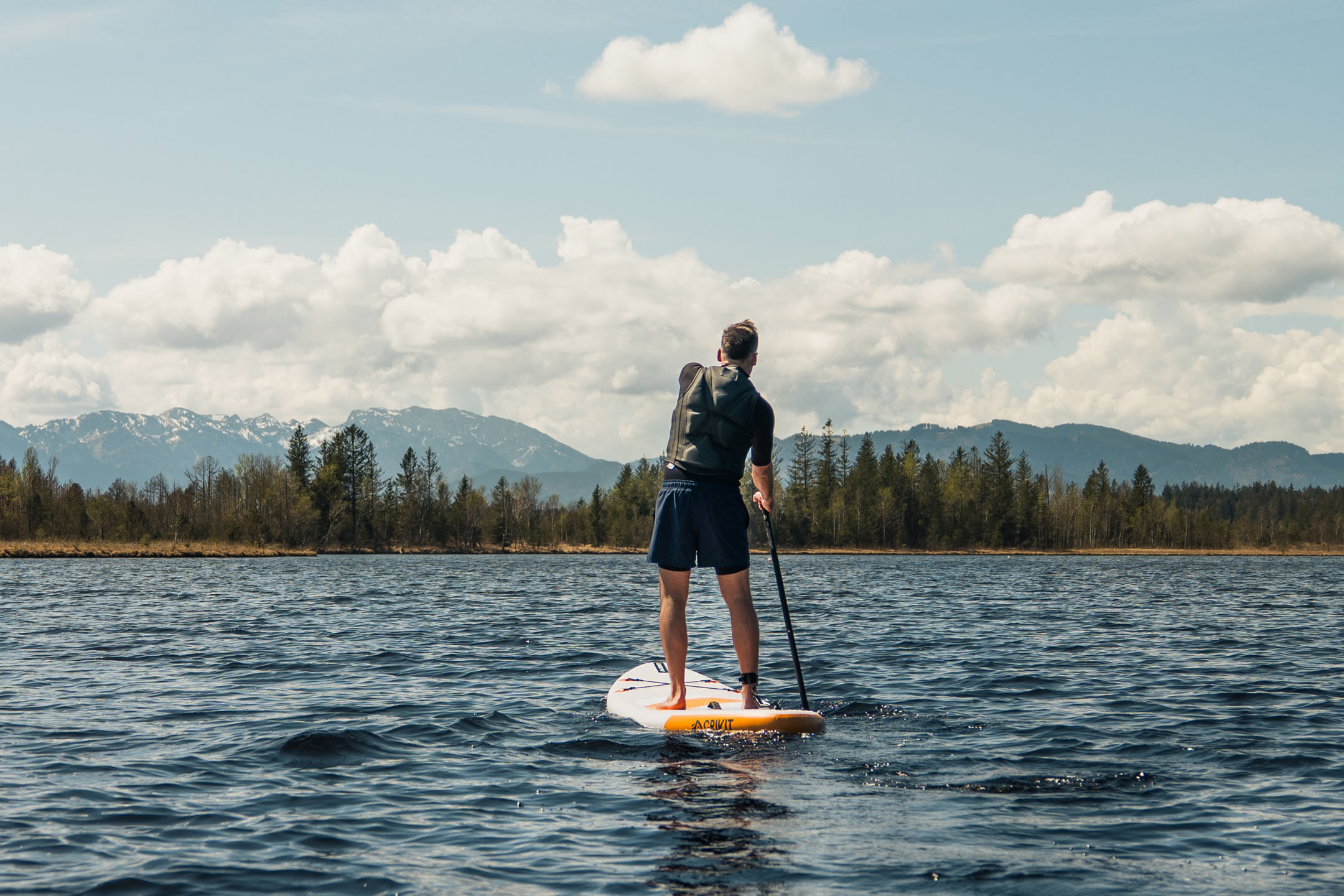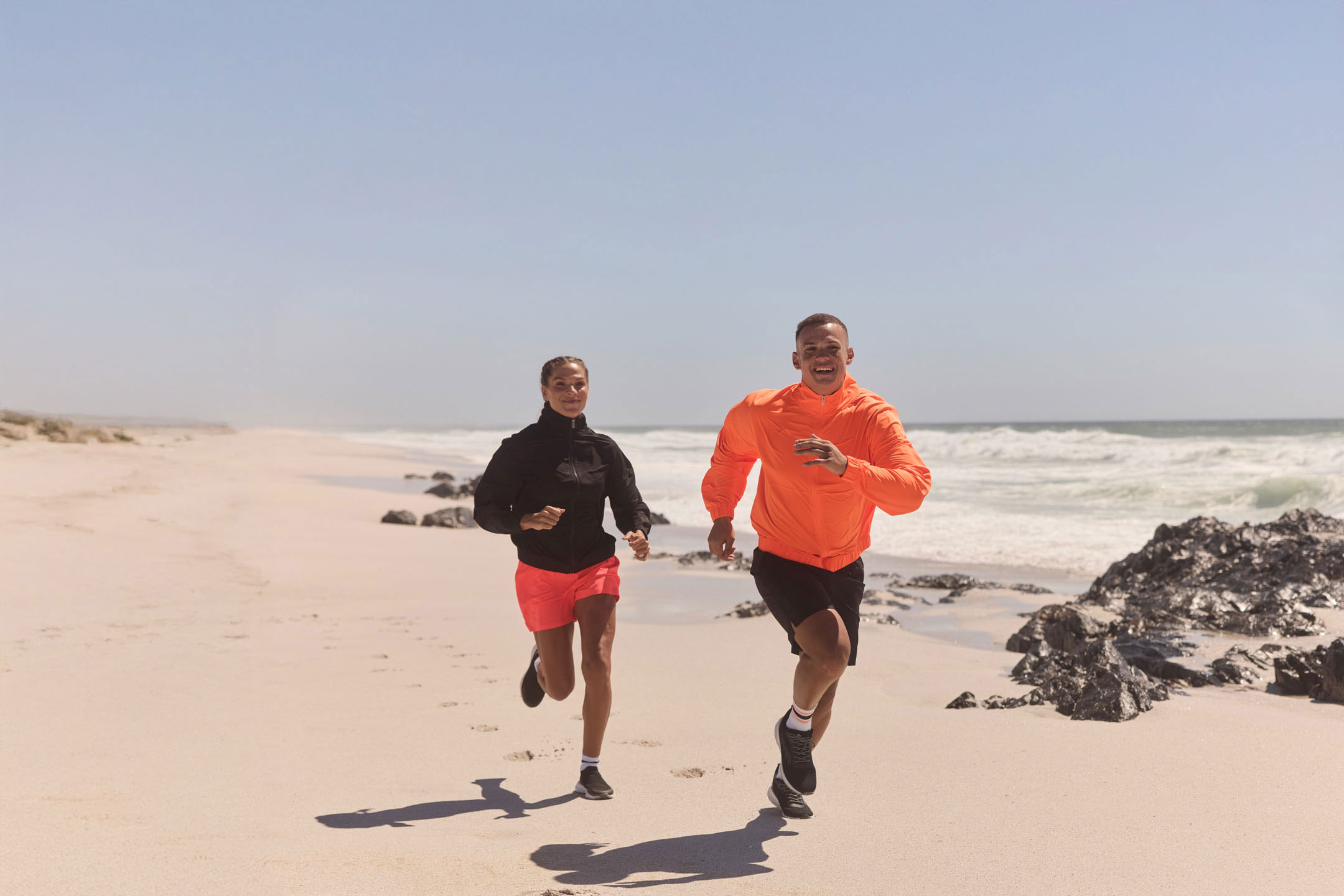SUP beginner's guide: Learn Stand Up Paddling safely & have fun
Stand Up Paddling, or SUP for short, is one of the most popular water sports of recent years. The mix of outdoor adventure, fitness and relaxation on the water is attracting more and more people, as it is also ideal for beginners. But how does it work if you've never stood on a SUP board before? In this beginner's guide, we give you the best tips for getting into the water safely and having fun - from choosing the right equipment to your first ride. Manuel, SUP instructor and personal trainer, shares his expertise and shows you how to get started in this fascinating sport with simple steps and the right attitude.
What is stand up paddling?
In stand up paddling, you stand on a large board that is similar to a surfboard and move across the water with the help of a paddle. Originally from Hawaii, SUP has become one of the most popular outdoor activities worldwide in recent years. It combines balance, coordination, strength and endurance, making it a great full-body exercise.
What makes stand up paddling so popular? Top reasons why beginners love SUP
Compared to other water sports, stand up paddling is relatively easy to learn - which makes SUP very popular with beginners too. And even if you fall off the board, the jump into the water is not so bad in warm temperatures. The special thing about SUP is the feeling of freedom you can experience on the water. There is hardly any other water sport where you can enjoy the vastness of the water so much, even without much previous experience.
What are the physical and mental benefits of SUP?
Stand up paddling is not only a really good full-body workout, but also a really good tool for your mental health. So you can benefit both physically and mentally:
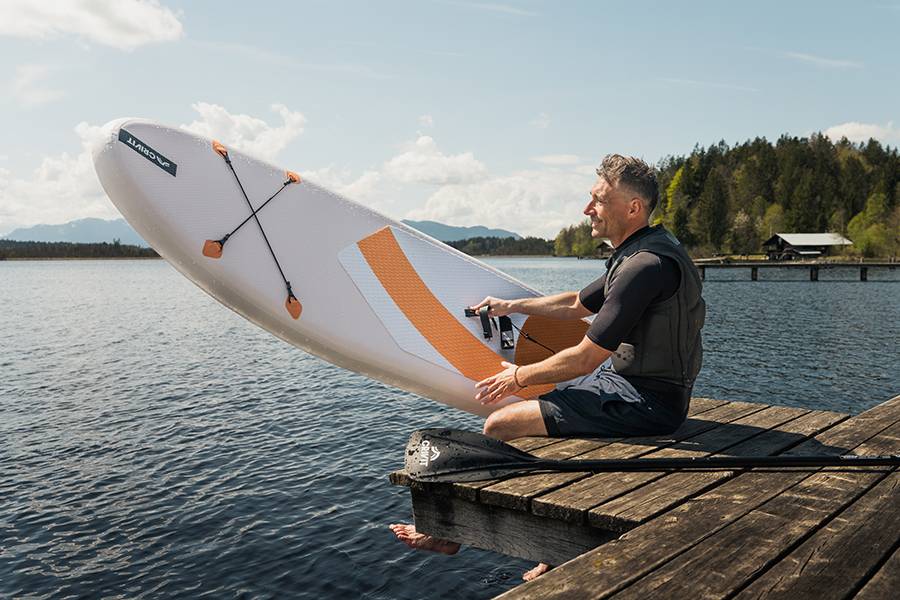
- SUP trains the core and deep muscles: to keep your balance on the swaying board, many small muscle groups in your body are active, especially in your stomach, back and legs.
- SUP strengthens your arms and back: On the SUP, the paddle is an integral part that you have to use to get off the spot. Diving in and moving the paddle trains your entire arm and back muscles.
- SUP improves your stamina: on a tour like this, you quickly cover a lot of distance, which improves your stamina - gently and without strain on your joints.
- SUP ensures better balance & coordination: The versatile movements that you combine on the SUP board train your coordination and balance.
- SUP helps to reduce stress: the gentle movements on the water, the fresh air and the calming environment of nature help to reduce stress hormones. The gentle rocking on the board gives your nervous system a sense of security - and allows it to switch into relaxation mode
- SUP promotes mindfulness and focus: With SUP, you have no choice but to be in the here and now. To avoid falling off, you have to concentrate on your balance and the rhythmic paddling movements. It's almost like meditation in motion and promotes mindfulness.
How does SUP work? Technique, instructions and tips
Before you get into the water, it's important to learn the right technique. Here are the basic steps for getting started with stand up paddling:
- Standing up: First stand up on the board by starting on your knees. Once you have a feel for the board and your balance, you can slowly push yourself up onto your feet. Make sure your feet are parallel to the board, hip-width apart.
- The correct posture: Keep your upper body upright, knees slightly bent and look forwards, not downwards. Your gaze should go into the distance to keep your balance. Avoid leaning too much - a relaxed but stable posture will help you to control the board better.
- Paddling: Paddling should be done with a steady motion. Make sure that you turn your upper body and don't just paddle with your arms - this way you use your entire body strength. Switch sides regularly to paddle in a straight line.
Tip from SUP expert Manuel: "It's normal to wobble a little the first time. Take your time to get the feel for the board. It's important that you stay calm and don't panic. Falling is also part of it. Then just get back on the board and carry on.
Essential SUP equipment: Choosing the right board, paddle & leash
Before you go out on the water, choosing the right equipment is crucial. A stand up paddle board consists of various components - the board itself, the paddle and also a leash, the safety line.
The SUP board:
For beginners, it is advisable to choose a stable, wide board. The wider the board, the easier it is to keep your balance. Boards that are around 10 to 11 meters long are ideal for beginners as they offer a good balance between stability and manoeuvrability. An inflatable SUP is an excellent choice - it is lightweight, robust and easy to transport.
The paddle:
The paddle should be light and stable so that you can control it easily. Make sure that the paddle is adjustable in length, as you can adapt it to your height. A paddle that is 15 to 20 cm longer than your height provides the best comfort when paddling.
The leash:
The leash is an important safety precaution. It connects you to your board if you fall. This means you can always reach the board again quickly. Make sure the leash is the right length for your board and fits comfortably.
Best places for your first SUP experience
The first SUP excursion should take place on a calm body of water. Lakes, ponds or calm rivers without strong currents are ideal. You shouldn't start out in hilly areas with wind or waves.
Tip from SUP expert Manuel: "Choose a place without a lot of traffic from other boats or jet skis. A calm lake is perfect for getting started."
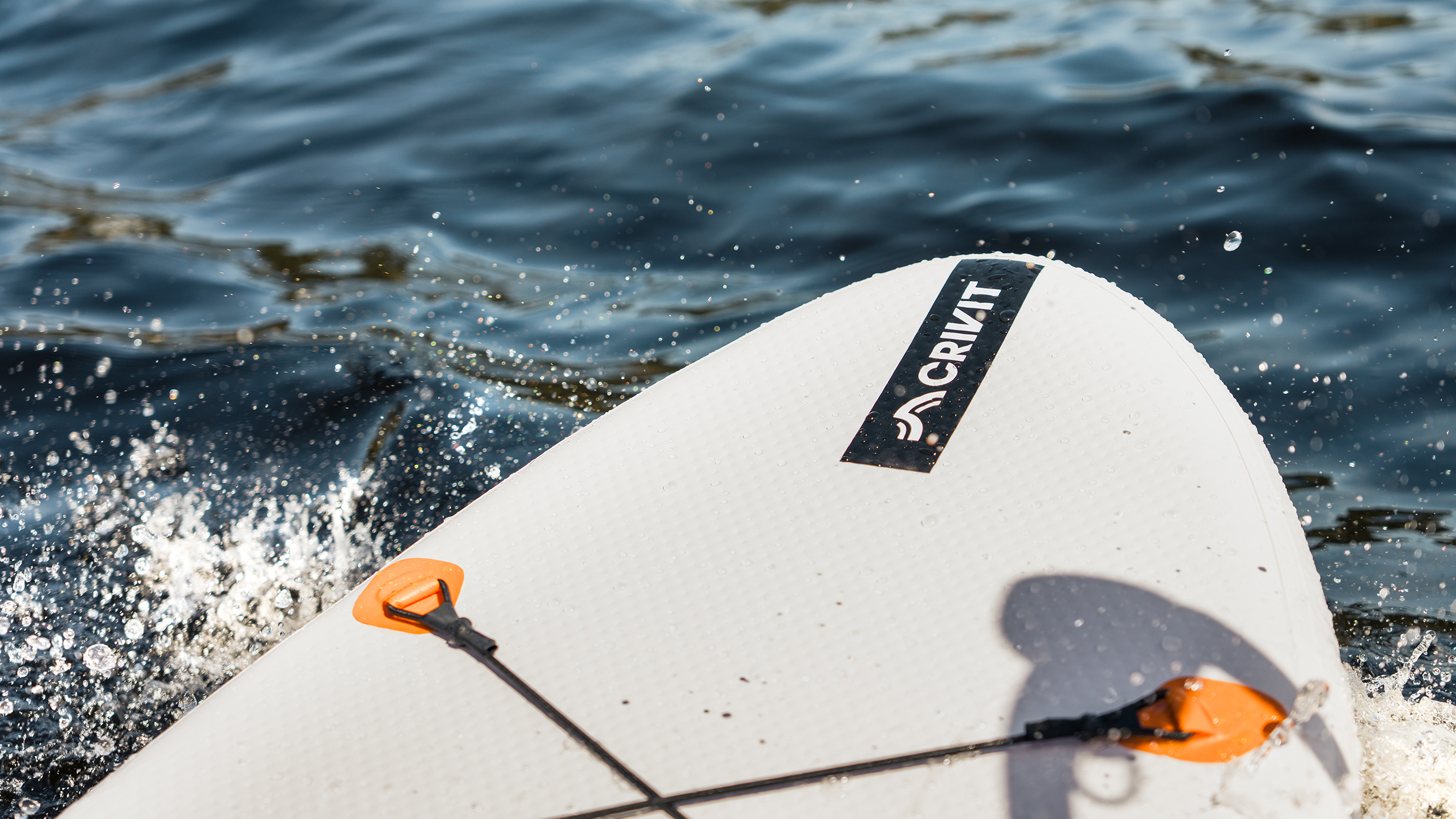
Conclusion: Your first step into the world of stand up paddling
Stand up paddling is a fantastic way to combine nature, sport and relaxation. With the right tips and a little practice, you'll soon be having fun paddling and experiencing your body and mind in a new way. Start slowly, be patient with yourself and enjoy every moment on the water. And who knows - maybe you'll soon be just as enthusiastic as Manuel and discover your own love of SUP!
Frequently asked questions for SUP beginners:
It usually only takes 20-30 minutes to learn the basic technique and to stand safely on the board. With regular practice, you will make rapid progress.
No, you don't need any previous experience. SUP is suitable for almost all fitness levels, and with the right tips you'll quickly get into the flow.
That's completely normal! Stay calm, swim back to the board and just try again. Practice makes perfect.
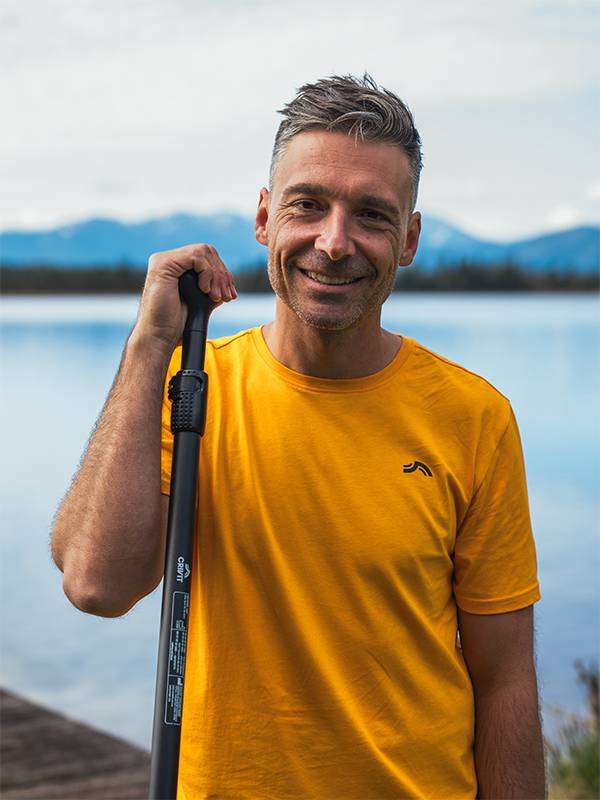
Profile of SUP expert Manuel
Name: Manuel Fuchs
Age: 43 years
Profession: exercise and health expert, outdoor guide, SUP instructor, lecturer
Sporting qualifications:
- Fitness economist, fitness specialist, health and rehabilitation trainer
- Pain therapist according to L&B, psychosocial health specialist IHK
- SUP instructor, personal trainer and many other licences
- Qualification for §20 spine/cardiovascular training, §44 rehabilitation trainer (orthopaedics, oncology, diabetes)
That's what makes Manuel special: Manuel is versatile, passionate and has over 20 years of experience in the world of exercise and fitness. He motivates people with enthusiasm, patience and expertise - whether on the SUP board, in the gym or on an outdoor adventure.
